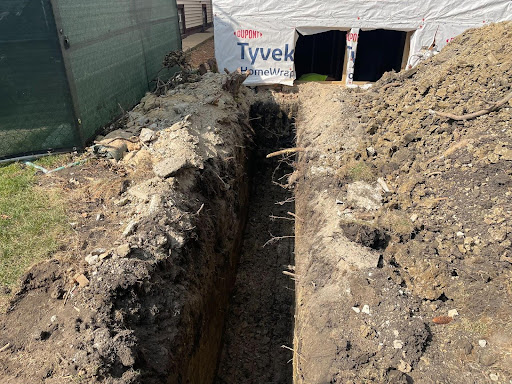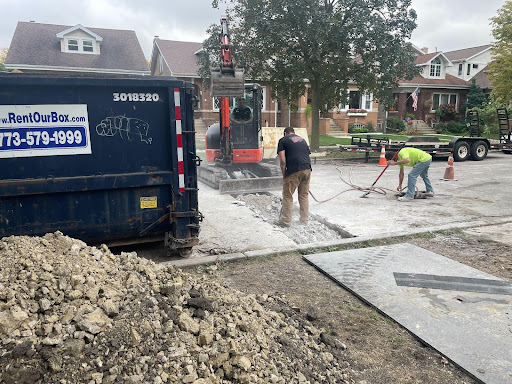At the end of 2020, Chicago approved the Additional Dwelling Units (ADU) ordinance in hopes to leverage the city’s existing housing inventory to provide affordable housing options. The program identified five pilot areas within the city in hopes of incentivising building owners to construct units as a means of a more “Affordable” option to residential housing.
There has been a lot of hype about this program and it seems like every 2-4 unit listing within a pilot area spotlights the coveted “ADU Zone” label in its marketing. For those of us who have gone through the process, we can all agree that the ADU program does a great job of simplifying the zoning side of the equation by eliminating the lengthy and arbitrary Zoning variation process allowing the owner to add a unit or in some cases additional units by right. However, the property still needs to meet all the requirements from the Chicago Building Department which is an overlooked step that has drastically minimized the effectiveness of this program.
BASEMENT UNITS
Let’s say you have a typical 2-unit property with a main level, upper level, and an illegal basement unit as your 3rd unit. Your building is within an ADU pilot zone and you are excited to legally convert the basement unit to a legal unit. This gives you a legal three unit property and in theory should increase the value of your asset. The basement unit is already finished, has a tenant in there, and already has two forms of egress so you are excited to get away from the illegal status and get this unit above-board. Unfortunately, the path to legalization is likely going to be a lot more than just submitting paperwork.
Besides the egress requirement, you will need to meet the general ceiling height requirements of 7ft and then 6’4” for areas obstructed by beams or ducts - 2019 Chicago Building Code. So if your existing ceiling height is 6’10” you will need to dig down the additional 2” to meet the city’s requirement. This obviously can’t be done with a tenant in there, and even after the tenant has vacated, you are now virtually gutting the unit as you'll have to rip up the floor to dig down and then refloor, reframe, re-drywall…etc. This is not an insignificant cost and most investors choose to just keep the existing status instead of investing tens of thousands of dollars just to gain 2-inches to meet the city requirement.
Let’s say your basement unit is lucky enough to meet the 7ft height requirement. That’s a good start, but you still are not out of the woods yet. You will still need to pay for architectural drawings, pull permits, and pass inspections to meet today’s standards for plumbing, electric, HVAC, and new construction. It’s highly likely your 100 year old building does not meet these requirements and you are now opening Pandora's box to what the city will require you to upgrade (and to be clear, the majority of these upgrades are necessary and in the best interest of the tenant and the building. I am simply pointing out that these are costs many investors don’t account for in their planning).
An obvious one from the electric side will be adding an electric panel so each uint plus the common area has their own panel. If your building has 3 existing panels with the basement unit tied to the common area, you will need to install and wire a fourth panel. If you have old cloth wiring you are now looking at rewiring the entire building to bring the property up to code. A big hitter on the plumbing side is upgrading water service. Many of these buildings have ¾” to 1” lead pipes for the water service coming into the building. Due to Chicago’s latest revisions to the Plumbing Code; the most you can get on a 1” service is about 2 bathrooms, 1 kitchen, and a laundry setup. Anything above that now requires a 1½” service and the city is pushing this requirement to replace all of the old lead lines.
This results in needing to upgrade the water service which can be a $20,000-$30,000 job. Your contractor needs to dig out the front yard to the main (which may or may not be on your side of the street - look at which side of the street the fire hydrant is located; as this can be a good reference), replace the pipe and then repave/resod. Below are some visuals to portray the work required to upgrade water service:


COACH HOUSE
Building a coach house within the ADU zone also comes with a few considerations before jumping in. First and foremost, it’s a misconception that garages with a flat roof are equipped to handle a deck or an entire coach house. It is highly likely that the entire structure needs to be torn down and built new with the appropriate supporting structure and foundation to handle the weight you are adding above the garage. Speaking of tearing down, your coach house can not eliminate or reduce existing parking spaces. If you tear down a garage to build a coach house, you will still need to provide the same number of parking spaces which previously existed on the lot. The coach house is also limited to 700 sq ft of living space and cannot cover more than 60% of the property’s required rear yard area.
Lastly you’ll have to gameplan for how you’ll run your current utilities to the coach house. Similar to the basement unit example, you will need to account for another panel and an additional gas meter. We already discussed the cost of upgrading water service (this will very likely be required, even if you are not doing any work within the primary residence), and with a coach house you will likely have to dig up the backyard and run similar piping to the coach house as there is no current water supply. Given that your coach house will likely be above a garage space, you will also have to give consideration to how you will ensure pipes are appropriately heated/ Insulated and will not burst during the winter. Given the previously mentioned 700 sq ft size limit of the coach house, it can become challenging to justify the upfront investment vs the rent you will receive and value you will potentially add to the property.
This is not to deter anyone from trying to take advantage of the ADU program. It is still a great initiative that simplifies the zoning process and creates opportunities that were not present before 2020. The biggest benefit is that it opens up the opportunity for these units to be added without significant time and money invested into obtaining a Zoning Variation, which is not guaranteed for approval.
I am not a lawyer nor an architect and this information is not intended as legal advice. Please refer to the city’s webpage on the ADU Ordinance (https://www.chicago.gov/city/en/depts/doh/provdrs/homeowners/svcs/adu-ordinance.html) and also consult your attorney and architect for advice.
Additional Useful links to Reference:
https://gisapps.chicago.gov/ZoningMapWeb/terms.html
https://www.chicago.gov/city/en/depts/dcd/supp_info/certificate_of_zoningcompliance.html
https://www.chicago.gov/city/en/sites/additional-dwelling-units-ordinance/home.html
https://www.chicagocityscape.com/maps/index.php#/?places_type=chicagoadupilotarea
https://www.chicago.gov/city/en/depts/doh/provdrs/homeowners/svcs/adu-ordinance.html
https://www.chicago.gov/city/en/sites/additional-dwelling-units-ordinance/home/documents.html
https://webapps4.chicago.gov/eforms/aduapplication
https://www.cookcountyclerkil.gov/recordings/recording-faqs
Samule Pavlovcik is a licensed and self-certified architect. He is the founder and owner of Pavlovcik Architecture Inc - https://www.pavlovcikarchitecture.com/ - a firm that specializes in providing efficient and cost-effective designs.
Tom Shallcros is a Chicago investor, developer, licensed IL real estate broker with Second City Real Estate, and co-host of the Straight Up Chicago Investor Podcast - www.straightupchicagoinvestor.com
Looking for a Property Manager? Schedule a call today or visit our website for more information.
Get your FREE copy of: Top 10 Mistakes Investors Make When Working With Lenders
Extra Hacks & Tricks from Expert Investors? Join Our Facebook Group!
Missed something? Subscribe to our Youtube Channel!
LISTEN to our Podcast on iTunes | Spotify | Stitcher | TuneIn Radio
Need A Responsive Property Manager? We’ve got you covered!


